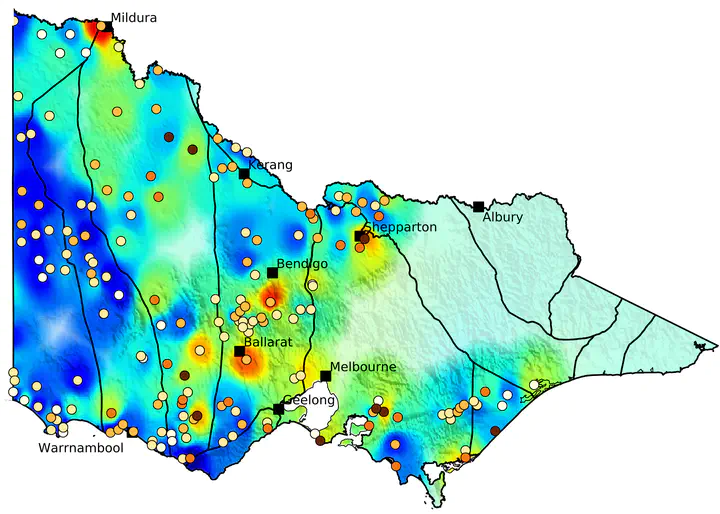 Surface heat flow variation in Victoria, Southeastern Australia
Surface heat flow variation in Victoria, Southeastern AustraliaAbstract
The surface heat flow field in Australia has for many years been poorly constrained compared to continental regions elsewhere. 182 recent heat flow determinations and 66 new heat production measurements for Southeastern Australia significantly increase our understanding of local and regional lithospheric thermal regimes and allow for detailed thermal modelling. The new data give a mean surface heat flow for Victoria of 71+/-15mWm-2 which fits within the 61-77mWm-2 range reported for Phanerozoic-aged crust globally. These data reveal three new thermally and compositionally distinct heat flow sub-provinces within the previously defined Eastern Heat Flow Province: the Delamerian heat flow sub-province (average surface heat flow 60+/-9mWm-2); the Lachlan heat flow sub-province (average surface heat flow 74+/-13mWm-2); and the Newer Volcanics heat flow sub-province (average surface heat flow 72+/-16mWm-2) which includes extreme values that locally exceed 100mWm-2. Inversions of reduced heat flow and crustal differentiation find that the Delamerian sub-province has experienced significant crustal reworking compared to the Lachlan and Newer Volcanics sub-provinces. The latter has experienced volcanism within the last 8 Ma and the degree of variability observed in surface heat flow points (up to 8mWm-2 per kilometre laterally) cannot be replicated with steady-state thermal models through this sub-province. In the absence of a strong palaeoclimate signal, aquifer disturbances, or highly enriched granites, we suggest that this high variability arises from localised transient perturbations to the upper crust associated with recent intraplate volcanism. This is supported by a strong spatial correlation of high surface heat flow and known eruption points within the Newer Volcanics heat flow sub-province.